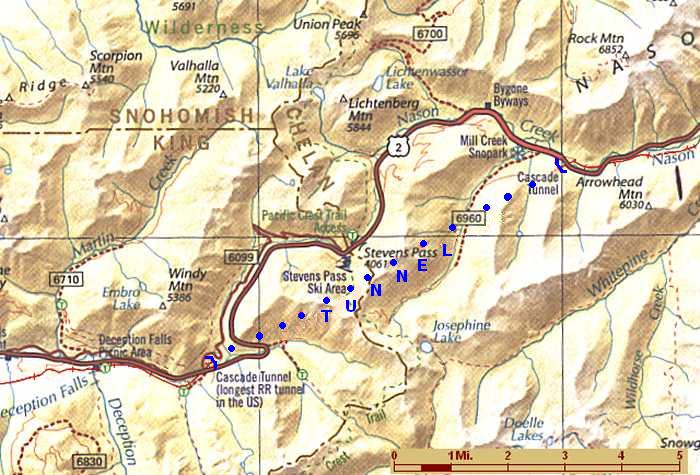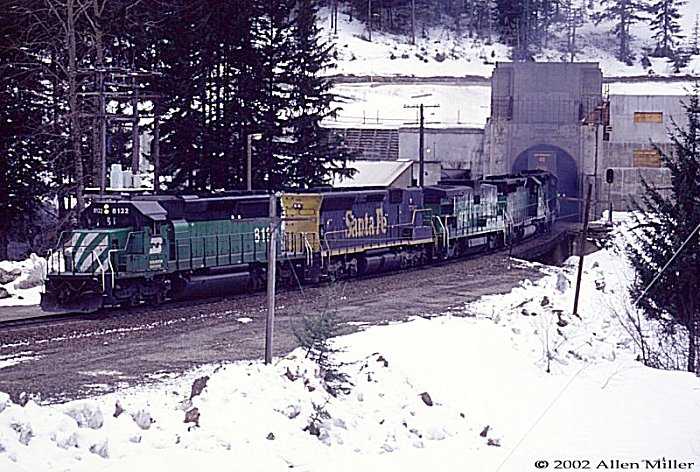See Winton-Chumstick TUNNELS, just a little further east.

|
The Cascade Tunnel was on
January 12, 1929, finished and dedicated by the President of the Great
Northern Railway, before the first electric train passed through. After
thirty-five months of drills roaring and battering at the solid
granite, their crews often wading about up to their knees in water
between three and four miles from the mouth of the tunnel, the battle
was won. When the electric train sped swiftly along through the smooth
concrete walled tunnel the engineers, dream was realised, and the
world's record in rapid tunnel construction was beaten. Many
passengers, as they pass through the Cascades to-day do not realise the
fortitude, endurance and resource that went towards the building of the
longest tunnel on the American continent.
The object of the tunnel was to afford Seattle, on the Pacific Coast, more direct and easier communication with the cities in West and Central America. By the building of the Cascade Tunnel the railway company secured absolute protection from the peril of avalanches and eliminated the cost of maintaining snow-sheds to guard the track. The main line route was shortened by seven and a half miles, while the curves and gradients were also considerably reduced. Concrete for the tunnel walls was poured through chutes in the sides of temporary moulds or "shuttering," close against the walls. When the concrete was set the moulds were removed. The arch of the tunnel was dealt with by pumping the concrete between the steel forms and the ceiling by means of a "pneumatic gun." Three plants were capable of concreting 400 ft. per week. See: Construction of Tunnel |

The Cascade Tunnel, 8 mi /13 km, is the longest RR tunnel in North America

A BN eastbound train exits the Cascade Tunnel in a cloud of smoke. Is this SF SD 45b still in service? 4/1996
Worlds Longest Tunnels